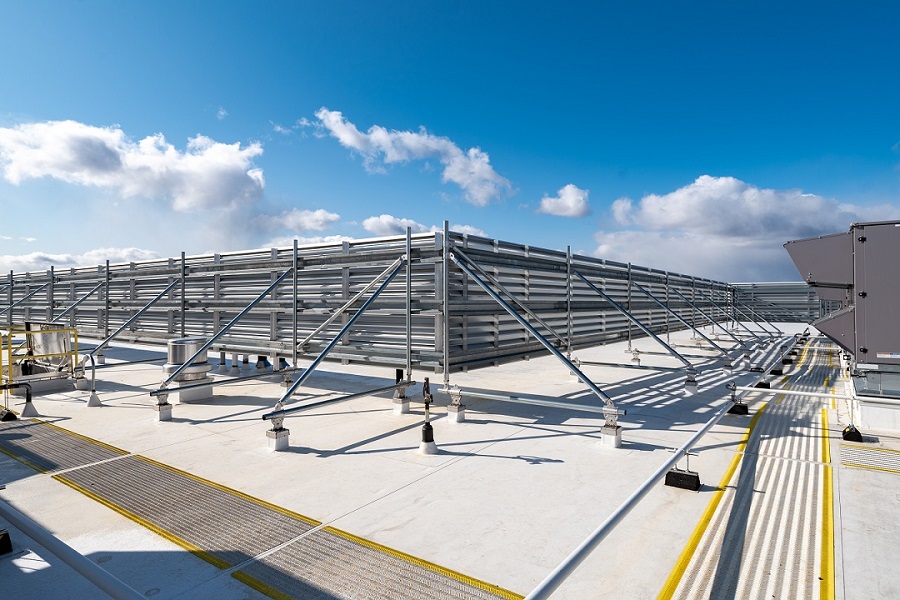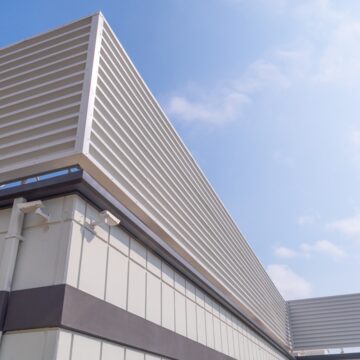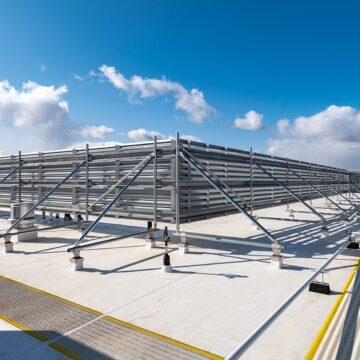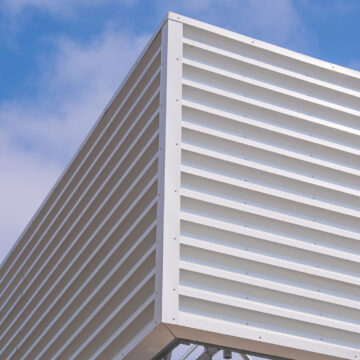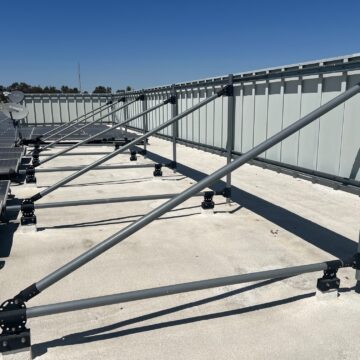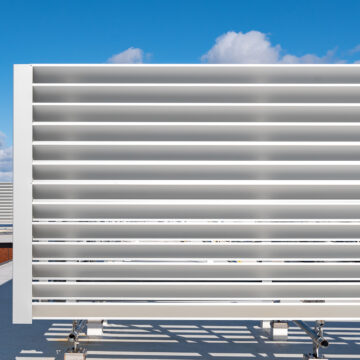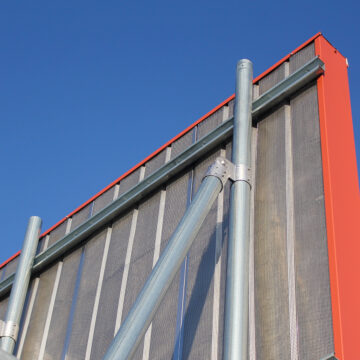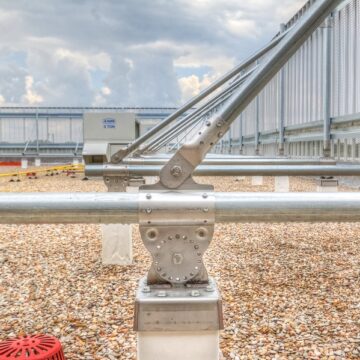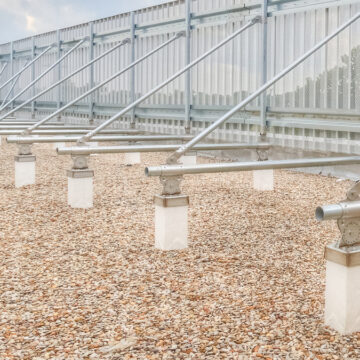Have you seen the cute little duck on our Equipment Screen page? Appearing calm and composed on the surface thanks to all the complex mechanics taking place below the waterline, he’s a true marvel of natural engineering. If it weren’t for everything taking place below the surface, the duck wouldn’t be able to do duck things and would very likely end up a clump of feathers floating in the water.
This analogy can be drawn to building engineering, all the way down to equipment screens. We’ve been in this business for a long time and have gotten many requests to replace systems that have failed with time. A recurring theme with these projects is a lack of proper underlying engineering with the failing systems.
View the following images of equipment screen failures at your own risk. They may be traumatic to even the most industry-seasoned eyes. We apologize in advance; we’re only trying to convey just how important site specific engineering is.
“Calculations, smalculations.”
Honestly, we don’t know exactly what happened here. A mixture of steel framing bolted to a row of bare wooden 4″x 4″ sleepers, inevitably leading to structural failure at the first instance of elevated wind-load would be our guess.
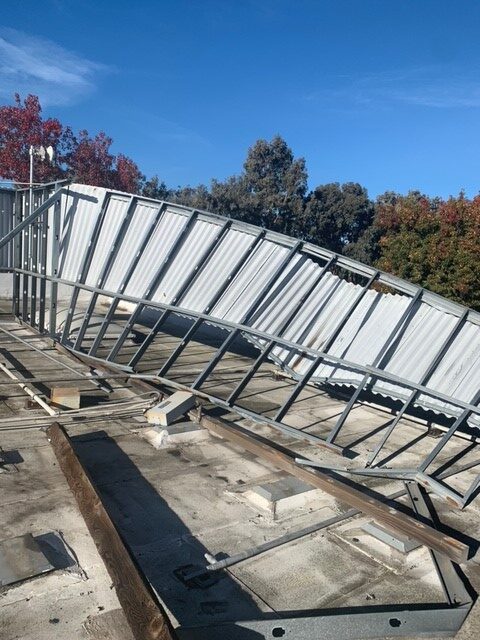
This is a key example of why our systems come fully engineered using site specific design criteria. Every project is different. That’s why we provide you with the full package, tailored to your specific project. Generic rubber stamped “engineering” data sheets just don’t cut it with us. We provide you with engineered solutions for all of our projects. And we back it up with full shop drawings and engineer’s stamp for any state.
“A marvel of modern engineering”- Said literally no one about this screen.
Wood is a tempting material to use for equipment screens. It’s readily available and contractors are generally familiar with it. This particular wooden screen system appears to be “attached” to the roof using good old fashioned cinderblocks, not to mention the system has been beaten down by the weather. Wood warps, bows and sags when exposed to the elements, especially when not adequately supported (pro tip: cinderblocks do not provide adequate support).
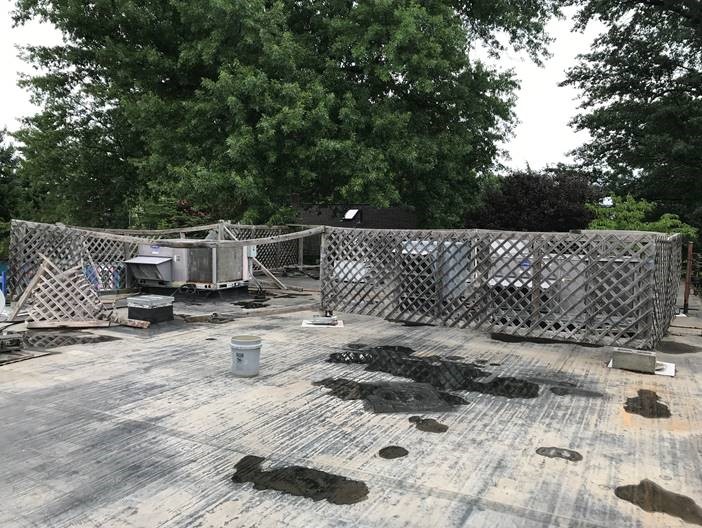
At RoofScreen, our patented roof attachment systems are designed and engineered to keep equipment screens in place and they never leak. Yep, we said never. We come from the construction and roofing business, so waterproofing is in our DNA. Our engineered systems come with a 20-year warranty, so you can rest easy knowing things will remain intact and dry. You don’t want your equipment screen looking like that thing above, do you?
“Just hit it with some caulking.” The plywood special.
Roofs are designed with slope to effectively drain water. Adding equipment screening when not originally designed into the drainage plan can block water and disrupt the flow if not properly engineered. This can lead to ponding water, mud and debris accumulation and premature roof membrane failure. In this case we see a nice puddle of – wait, is that blood!? collecting around the wooden sleepers in the bottom left of this photo. Would sure hate to see that start leaking into the workspace below.
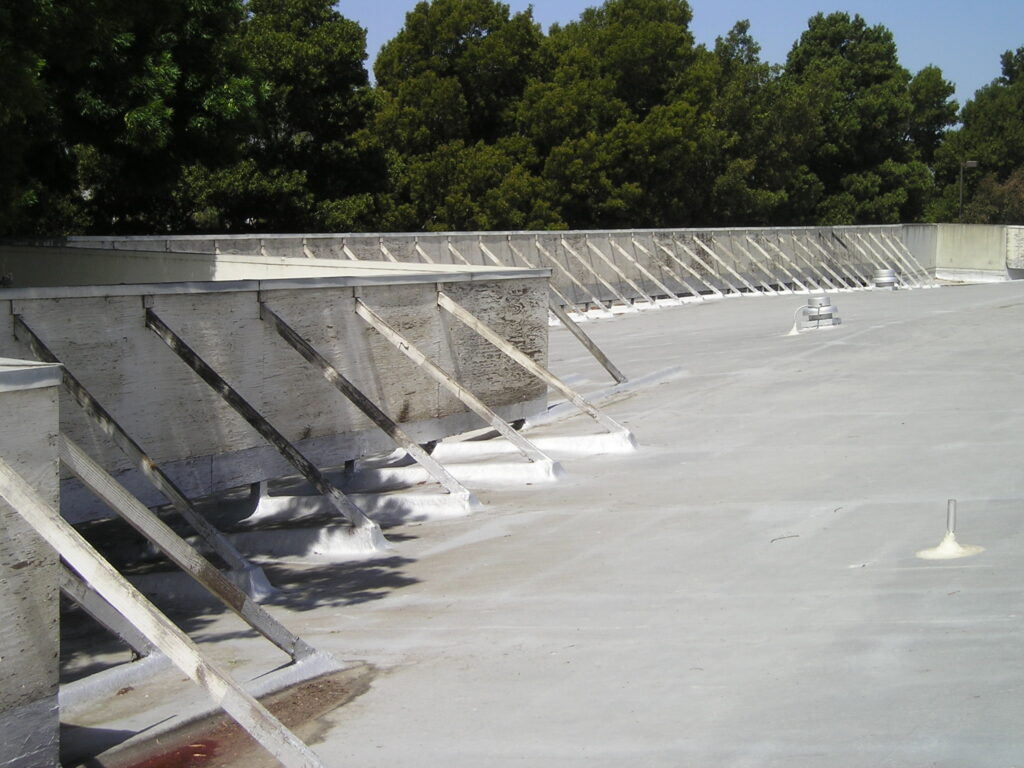
While this equipment screen looks to be structurally intact, there’s obviously a bit of an issue with design in regard to waterproofing (and more subjectively, aesthetics, unless discolored plywood is your thing). Many equipment screens, such as this one, are “built on the fly” and while they can be structurally sound, tend to neglect waterproofing.
On the other end of the spectrum, some systems focus on waterproofing, often by avoiding roof penetrations altogether, and end up skimping out on proper structural engineering. More often than not, this results in a screen that ends up looking like the previous two examples in this article.
We focus on both sides of the equation at RoofScreen. Properly engineered leak-proof roof attachments and fully calculated modular frame systems are part of what makes the RoofScreen system stand the test of time and never leak.
p.s. we’ve been assured the “blood” in the above photo is merely a pool of water with decomposing foliage mixed in–wonder how long that’s been sitting there.
Hopefully this experience wasn’t too painful. The fact of the matter is some manufacturers want to keep things simple for themselves. We want to keep things simple for our customers. That’s why we provide engineering that is completely tailored to your actual project, as opposed to just providing generic, one-size-fits-all, pre-engineered cut sheets. It’s more work for us, but it’s the right thing to do, plus, your equipment screen will never end up in an article like this one.
In an attempt to restore your faith in equipment screens, we’ll leave you with a couple images of our fully engineered RoofScreen system out in the wild.
